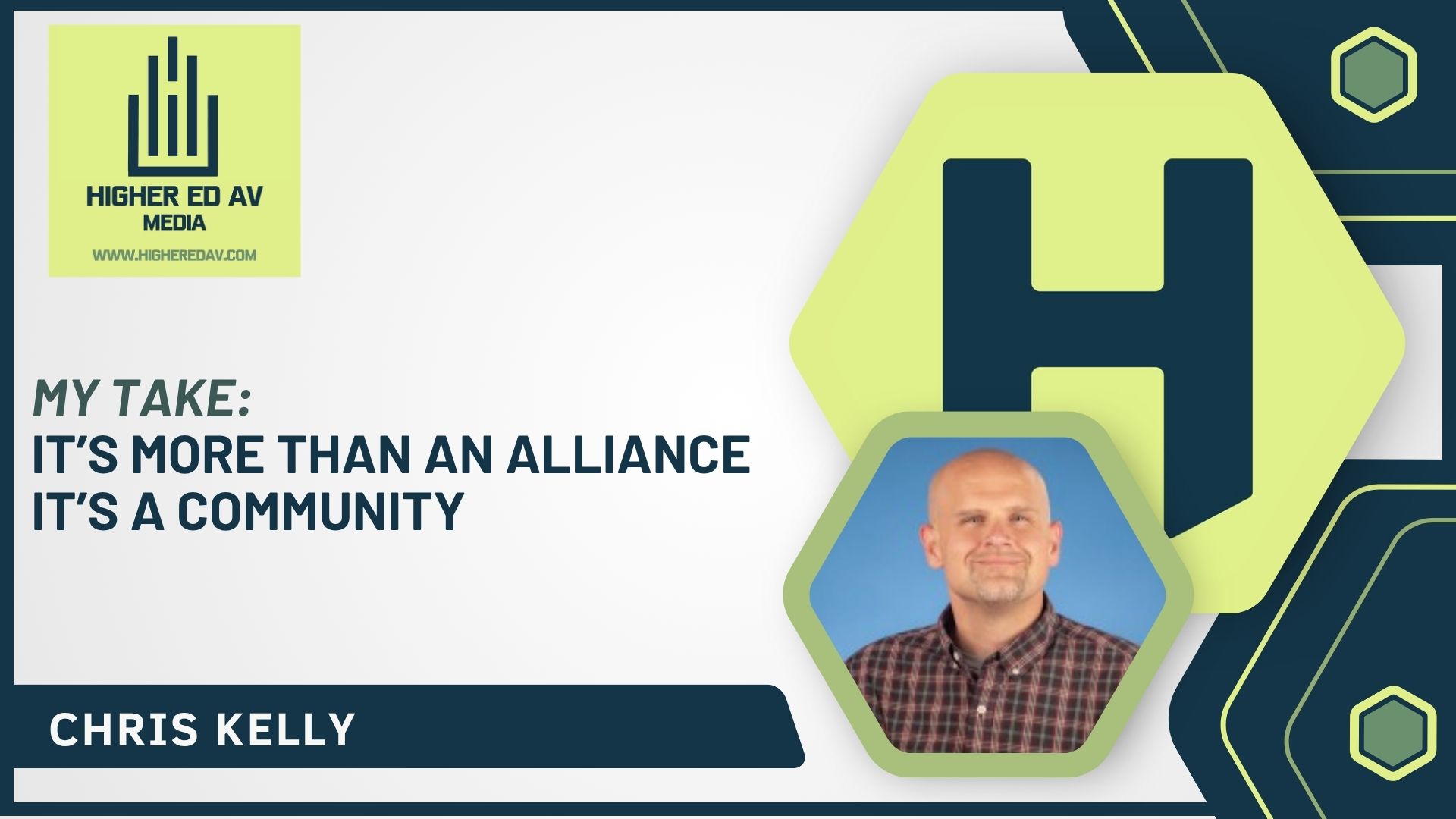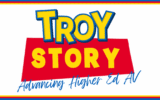Never “Just Another Room”: Starting With Why in Higher Ed AV
Empowered by Design — with Chris Kelly
Picture this: a professor can’t get an image on the projector five minutes before class. We remote in, unmute the video feed, and—voilà—picture restored. Ticket closed. On to the next one. But if our job ends there, we’ve failed at our core purpose.
What is your Why?
Many of you have read Simon Sinek’s Start with Why. If you haven’t, you should. The book’s core idea is simple: people don’t buy what you do; they buy why you do it. In higher ed AV, our “what” is obvious—reboot devices, swap cables, deploy rooms. Our “how” is our processes—standards, ticketing, escalation paths. But our Why is easy to forget amid the pace and the pings, and everyone’s can be slightly different.
I’m not here to tell anyone what their Why should be, but ideally it’s more than just getting through the day or earning a paycheck. My Why is to empower our faculty to reach their full pedagogical potential, unleashing the power of their teaching to create learning experiences that are universally accessible, deeply engaging, and globally connected, thereby inspiring our students to become active, impactful contributors to the world. Forgetting our Why means we’re just fixing or tossing in equipment—not empowering our partners, communities, and ourselves.
It’s never just a service call. It’s never “just another room.” It’s a step in someone else’s story. We help a future doctor see the lesson that will inform a diagnosis. We make it possible for an engineering student to simulate a structural failure safely. We give a future teacher the confidence to lead a hybrid discussion where every voice is included. Our work is the silent, essential foundation for discovery and innovation.
Our role also influences who chooses a campus. If campus tours show people struggling with technology, that doesn’t drive admissions. When we enable and empower all people equitably, we attract not only students but educators. We are in a powerful position to affect the success of our universities.
Making a Habit
Once we define our Why, the next step is applying it in daily practice. Simon Sinek’s Golden Circle framework starts with Why, then moves to How and What—keeping purpose at the center. Here’s how it applies to learning spaces:
- Why: To ensure people can teach and learn confidently, equitably, and repeatably—so they can improve lives and communities.
- How: By designing and maintaining AV experiences that are intuitive, resilient, inclusive, and aligned to actual user needs—not just our assumptions.
- What: Devices, tickets, rooms, refreshes, firmware updates, and all the technical tasks we execute every day.
When we lead with Why, our decisions change. We still fix the symptom—because class starts in four minutes—but we also validate the experience and address the root cause. We still standardize—because faculty deserve consistency—but we also listen before we specify.
Victory isn’t when the device works—it’s when the experience works. After that remote fix, take 60 seconds to validate the Why. Instead of just leaving, ask the instructor: “Now that this symptom is resolved, is the rest of the system working as you expect to enable your pedagogy?” This simple follow-up turns a transactional fix into a moment of trust and partnership.
Focus on Outcomes, Not Equipment
Users don’t just want equipment—they want outcomes. Faculty and students often describe solutions, “I need a bigger monitor”. Our job, guided by our Why, is to validate the outcome behind the ask. Ask for outcomes, not just features: “What will you be able to do when this works the way you want?” Test assumptions with a demo. Design for moments, not just rooms—the first five minutes of class are sacred. Assessment days are high-stakes. Map these critical moments and design technology to support them flawlessly.
Measure what matters to the Why. Traditional metrics like uptime and ticket counts are important, but they only tell part of the story. Add experience-level objectives that align directly to learning.
Time to Instruction (T2I): How long from reporting an issue to the moment the instructor can resume their pedagogical activity (e.g., sharing the first slide)?
First-Attempt Success Rate: What percentage of sessions begin without a faculty member calling for help?
Accessibility Readiness: Are assistive listening systems obvious and operational? Are controls labeled clearly? These things translate technical success into educational impact.
A Practical Toolbox You Can Use Tomorrow:
- Micro-Checklist for Every Service Call:
- Symptom resolved?
- Can the instructor start instruction now?
- Can hybrid participants see/hear?
- Did you observe any design friction?
- Discovery Prompts for Design:
- “Walk me through the first five minutes of class.”
- “What’s the most challenging aspect of using the technology for you?”
- What would make this flow better for you?
- A One-Sentence Why Statement for Your Team:
- We exist to ensure that every class can begin—and continue—without AV getting in the way, so that teaching and learning happen confidently, equitably, and at full impact.
The Privilege and the Promise
In higher education, our work doesn’t end when a monitor lights up. It ends when a person feels ready, when a lesson flows, when a student engages who might have stayed silent. That’s a solid Why. We’re not just maintaining gear; we’re maintaining possibility. We stand where technology meets human potential. That is a privilege. It deserves more than quick fixes and cookie-cutter designs. It deserves curiosity, validation, and care. Start with Why. Validate the experience. Measure what matters. And tomorrow—ask one instructor about their first five minutes of class. Begin there. Remember: it’s never “just another room.” It’s the next chapter in someone’s future—and we get to help write it.

Chris Kelly
Chris Kelly, M.A., is a Senior IT Support Specialist for Learning Environments at Creighton University in Omaha, Nebraska. He holds a Master of Arts in Counseling with a K–12 School Specialization and brings over a decade of social work experience to his current role in higher education technology. Since joining Creighton, Chris has played a key role in advancing the university’s AVoIP infrastructure and expanding its network and remote capabilities. He was specifically hired to bring a network-focused perspective to the team during a period of rapid technological growth.
Chris is passionate about fostering inclusive, accessible, and connected environments, and he is committed to promoting diversity, equity, and inclusion in all aspects of his work. He currently serves as Advisory Board Chair for the Higher Education Technology Managers Alliance (HETMA.org), where he helps shape the future of AV/IT in higher education.






![brAVe [space] Leading with Heart Tammy Fuqua](https://higheredav.com/wp-content/uploads/2025/12/brAVe-space-Leading-with-Heart-Tammy-Fuqua.png)



